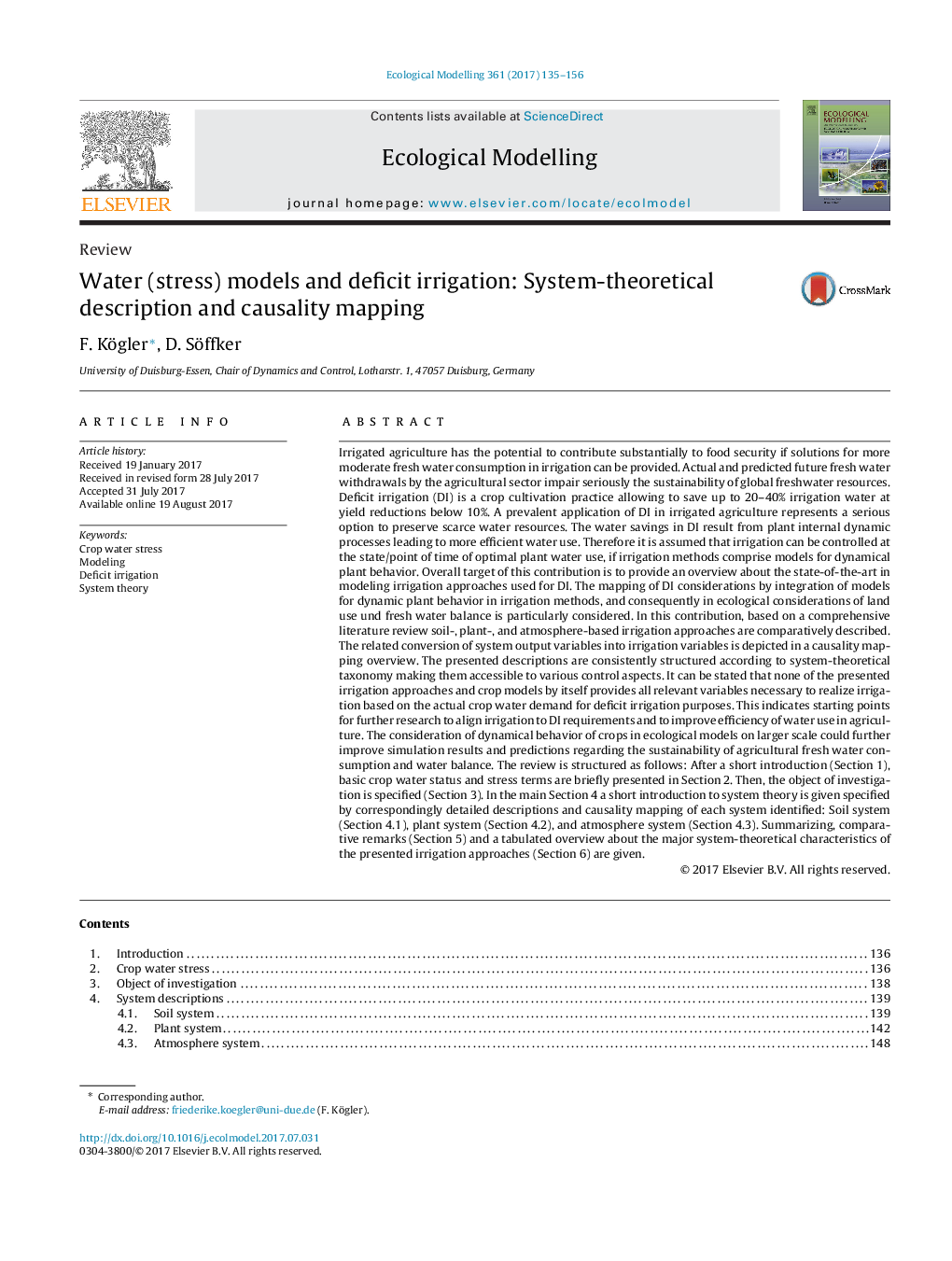| Article ID | Journal | Published Year | Pages | File Type |
|---|---|---|---|---|
| 5742001 | Ecological Modelling | 2017 | 22 Pages |
â¢System-theoretical description: Mapping of Deficit Irrigation (DI) in irrigation models.â¢Causality mapping overview: Conversion of system output variables into irrigation variables.â¢Tabulated overview: Major system-theoretical characteristics of irrigation approaches.â¢No irrigation approach maps actual crop water demand and the needed irrigation variables.â¢Mapping dynamical crop behavior in ecological models can improve simulation results.
Irrigated agriculture has the potential to contribute substantially to food security if solutions for more moderate fresh water consumption in irrigation can be provided. Actual and predicted future fresh water withdrawals by the agricultural sector impair seriously the sustainability of global freshwater resources. Deficit irrigation (DI) is a crop cultivation practice allowing to save up to 20-40% irrigation water at yield reductions below 10%. A prevalent application of DI in irrigated agriculture represents a serious option to preserve scarce water resources. The water savings in DI result from plant internal dynamic processes leading to more efficient water use. Therefore it is assumed that irrigation can be controlled at the state/point of time of optimal plant water use, if irrigation methods comprise models for dynamical plant behavior. Overall target of this contribution is to provide an overview about the state-of-the-art in modeling irrigation approaches used for DI. The mapping of DI considerations by integration of models for dynamic plant behavior in irrigation methods, and consequently in ecological considerations of land use und fresh water balance is particularly considered. In this contribution, based on a comprehensive literature review soil-, plant-, and atmosphere-based irrigation approaches are comparatively described. The related conversion of system output variables into irrigation variables is depicted in a causality mapping overview. The presented descriptions are consistently structured according to system-theoretical taxonomy making them accessible to various control aspects. It can be stated that none of the presented irrigation approaches and crop models by itself provides all relevant variables necessary to realize irrigation based on the actual crop water demand for deficit irrigation purposes. This indicates starting points for further research to align irrigation to DI requirements and to improve efficiency of water use in agriculture. The consideration of dynamical behavior of crops in ecological models on larger scale could further improve simulation results and predictions regarding the sustainability of agricultural fresh water consumption and water balance. The review is structured as follows: After a short introduction (Section 1), basic crop water status and stress terms are briefly presented in Section 2. Then, the object of investigation is specified (Section 3). In the main Section 4 a short introduction to system theory is given specified by correspondingly detailed descriptions and causality mapping of each system identified: Soil system (Section 4.1), plant system (Section 4.2), and atmosphere system (Section 4.3). Summarizing, comparative remarks (Section 5) and a tabulated overview about the major system-theoretical characteristics of the presented irrigation approaches (Section 6) are given.
